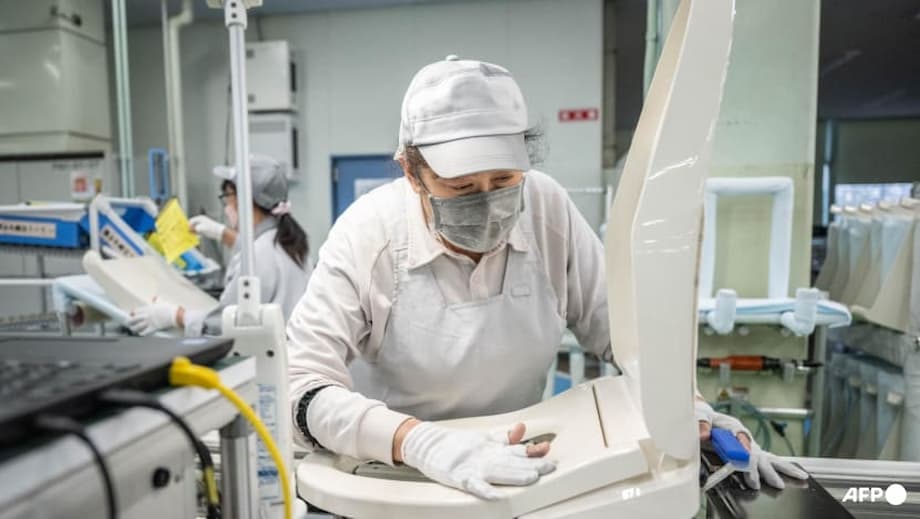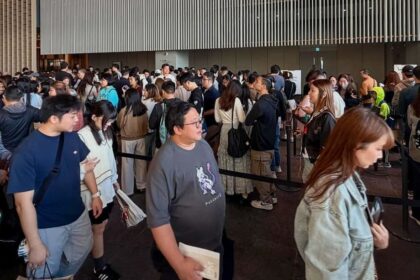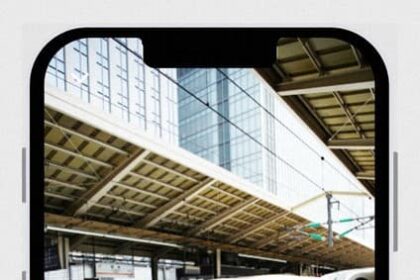Japan’s High-Tech Solution to Public Restroom Woes
Japan, a country renowned for its technological innovation and famously advanced toilets, has taken another leap forward in public hygiene and convenience. TOTO, the nation’s leading toilet manufacturer, has launched a new service that allows anyone to locate the nearest public restroom and check how crowded it is in real time—simply by scanning a QR code with their smartphone. This initiative, rolled out in August, aims to address one of the most persistent urban challenges: long queues, especially outside women’s restrooms in busy places like train stations and shopping malls.
- Japan’s High-Tech Solution to Public Restroom Woes
- How the TOTO QR Code Toilet Finder Works
- Addressing the Gender Gap in Public Restrooms
- Technology Behind the Scenes: Privacy and Data
- Why Japan Leads the World in Toilet Innovation
- Broader Implications: Smart Cities and the Future of Public Facilities
- In Summary
Long lines for public toilets are a common frustration in Japan, as in many other countries. The problem is particularly acute for women, who often face longer waits due to both higher demand and the time required for use. With urban populations swelling and tourism rebounding, the need for smarter restroom management has never been greater. TOTO’s new system, known as TOTO Connect Public, promises to transform the way people find and use public facilities, making the experience cleaner, faster, and more efficient for everyone.
How the TOTO QR Code Toilet Finder Works
The core of TOTO’s new service is its integration with existing internet-connected facility management systems. These systems were originally designed to help building managers monitor and maintain restrooms—alerting staff if a cubicle is dirty, out of supplies, or occupied for an unusually long time. Now, with the addition of QR codes at restroom entrances and inside stalls, the system has become user-facing, offering a suite of features for both visitors and facility operators.
Here’s how it works:
- Finding a Restroom: Users scan a QR code posted at the entrance of a facility or in public areas. This brings up a website (no app download required) that displays a map of nearby restrooms, along with live congestion levels—categorized as vacant, slightly crowded, or crowded.
- Checking Amenities: The website also provides information on restroom features, such as wheelchair accessibility, the presence of high chairs for babies, and other helpful details.
- Reporting Problems: Inside each stall, another QR code allows users to quickly report issues like broken flushes, lack of toilet paper, or cleanliness concerns. These reports go directly to facility staff for prompt action.
- Multi-Language Support: Recognizing Japan’s international visitors, the service is available in English, Chinese, and Korean, making it accessible to tourists as well as locals.
According to TOTO, the system determines restroom occupancy using sensors—likely weight sensors on toilet seats or occupancy detectors—rather than cameras, ensuring user privacy while providing accurate real-time data.
Enhancing Efficiency Without Major Construction
One of the key motivations behind the service is the recognition that simply building more toilets is not always feasible. Urban infrastructure, especially in older buildings and crowded city centers, often cannot accommodate additional plumbing or drainage. By making existing facilities more visible and efficiently used, TOTO’s system helps alleviate bottlenecks without the need for costly renovations.
Facility managers also benefit from centralized monitoring. They can track usage patterns, adjust cleaning schedules, and respond to maintenance requests more rapidly, all of which contribute to a better user experience.
Addressing the Gender Gap in Public Restrooms
Japan’s public restroom congestion is not just a matter of inconvenience—it’s a gender equity issue. Studies and anecdotal evidence consistently show that women spend more time waiting for public toilets, particularly during events, at train stations, and in shopping centers. This disparity is due to both biological factors and the higher likelihood that women will be accompanied by children or elderly relatives who also need assistance.
The Japanese government has recognized this problem and is taking steps to address it. The Ministry of Land, Infrastructure, Transport and Tourism is seeking additional funding to:
- Install digital signage that displays real-time restroom occupancy, helping users make informed decisions before joining a queue
- Introduce movable toilet walls, allowing facilities to flexibly increase the number of stalls for women during peak times
These efforts, combined with TOTO’s technological solution, represent a multi-pronged approach to making public spaces more inclusive and efficient.
User Reactions and Pilot Feedback
Early feedback from pilot tests has been overwhelmingly positive. Users have praised the ability to find less crowded restrooms quickly and to report issues without the embarrassment or hassle of seeking out staff. One participant in a pilot program remarked:
I wished for this kind of feature when encountering very dirty toilets in the past.
Yoichi Nakayama, an official in TOTO’s product sales promotion division, expressed optimism about the service’s impact, stating that it would “enhance user satisfaction in a facility by enabling a more efficient use of restrooms.”
Technology Behind the Scenes: Privacy and Data
Japan’s reputation for high-tech toilets is well earned, with features like heated seats, bidet functions, and even music to mask sounds. The new QR code system builds on this legacy, but it also raises questions about privacy and data security.
TOTO has emphasized that the system does not use cameras to monitor occupancy. Instead, it relies on sensors embedded in toilet seats or doors to detect whether a stall is in use. This data is anonymized and used solely to display congestion levels and alert staff to maintenance needs. No personal information is collected from users who scan the QR codes to access the restroom map or report problems.
For facility managers, the system offers a dashboard that aggregates usage statistics, helping them optimize cleaning schedules and resource allocation. This data-driven approach is expected to improve cleanliness and reduce downtime due to maintenance issues.
Why Japan Leads the World in Toilet Innovation
Japan’s obsession with restroom technology is rooted in both cultural values and practical necessity. Cleanliness is a deeply held ideal in Japanese society, reflected in everything from the ritual of removing shoes indoors to the meticulous maintenance of public spaces. The country’s toilets are famous worldwide for their comfort and innovation, with TOTO’s “Washlet” bidet seats becoming a symbol of Japanese ingenuity.
Public restrooms, however, have not always kept pace with private ones. Crowded urban environments, aging infrastructure, and surges in tourism have strained facilities, leading to the kinds of long queues and cleanliness issues that TOTO’s new system aims to solve.
Japan’s approach to public hygiene is also shaped by its experience hosting major international events, such as the Tokyo Olympics, which highlighted the need for accessible, user-friendly restrooms for visitors from around the world.
Comparisons with Other Countries
While other countries have experimented with restroom locator apps and digital signage, Japan’s integration of real-time congestion data, multi-language support, and direct maintenance reporting sets a new standard. In many places, public toilets remain hard to find, poorly maintained, or unsafe. By contrast, Japan’s model emphasizes transparency, cleanliness, and user empowerment.
Broader Implications: Smart Cities and the Future of Public Facilities
TOTO’s QR code toilet finder is more than a convenience—it’s a glimpse into the future of smart cities. As urban populations grow and expectations for public services rise, cities around the world are turning to technology to manage everything from traffic to waste collection. Public restrooms, often overlooked in discussions of urban innovation, are now becoming a focal point for digital transformation.
The benefits of such systems extend beyond comfort and convenience:
- Public Health: Cleaner, better-maintained restrooms reduce the spread of germs and improve overall hygiene.
- Accessibility: Real-time information helps people with disabilities or special needs find suitable facilities quickly.
- Tourism: International visitors are more likely to explore a city when they know clean, accessible restrooms are easy to find.
- Resource Efficiency: Data-driven maintenance reduces waste and ensures that staff are deployed where they’re needed most.
As cities worldwide grapple with similar challenges, Japan’s model may inspire others to adopt smart restroom management systems. The combination of user-friendly technology, privacy protection, and responsive maintenance sets a benchmark for public facilities everywhere.
In Summary
- TOTO has launched a QR code-based service in Japan that helps users find the nearest public restroom and check real-time congestion levels.
- The system integrates with existing facility management networks, allowing users to report maintenance issues and access information on restroom features.
- Long queues, especially for women, have driven demand for smarter restroom solutions; the Japanese government is also investing in digital signage and flexible layouts to address this.
- The service is available in English, Chinese, and Korean, making it accessible to both locals and tourists.
- Japan’s approach combines technological innovation with cultural values of cleanliness and efficiency, setting a new global standard for public restroom management.












